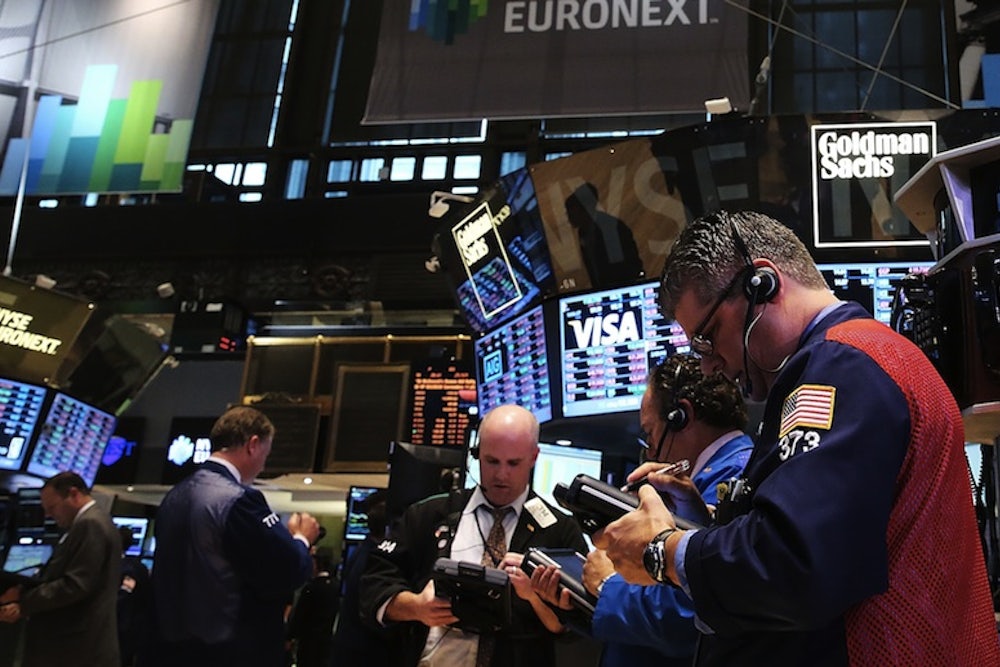Economic doomsday is approaching. And while we don’t know the exact date, we’re starting to get a pretty good idea.
On or around October 17, the Treasury Department will exhaust the "extraordinary measures" it has been using to pay the government’s bills. Without new authority to borrow money—in other words, without a new, higher debt ceiling—the Treasury will operate on what amounts to a day-to-day basis, paying bills with whatever cash it has on hand. And it can't keep that up for very long. At some point, the cash in Treasury's possession won't be sufficient to pay the bills it owes.
When will that be? The daily flow of money in and out of the Treasury is neither consistent nor perfectly predictable, making a precise prediction impossible, even for the Treasury itself. But the Bipartisan Policy Center, which has been closely monitoring this issue, has established a range—a best- and worst-case scenario for when government accounts come up short. And even the best-case scenario isn't very good. As you can see in the chart below, the Treasury will run short on cash sometime between October 22 and November 1. One reason the Treasury is almost certain to run out of cash on November 1 is that a bunch of huge bills come due that day: $18 billion in payments to Medicare providers, $25 billion to Social Security benefits, and $12 billion to active military and veterans.
Some Republicans have been saying President Obama and his allies are exaggerating the perils of the Treasury hitting the debt ceiling. As this argument goes, the federal government can “prioritize” payments, so that it meets its obligations to bondholders. This would preserve the nation’s creditworthiness. But it’s not clear whether that’s legal—or whether the Treasury department could even make it happen. Loren Adler, an analyst at the Committee for a Responsible Federal Budget, is among those who think the Treasury would pay those obligations to bondholders. He also thinks that’s less comforting than it sounds:
Although there is a question of legality because it amounts to prioritization, Treasury would almost certainly continue to pay interest on outstanding debt and continue redeeming bonds and issuing new ones because not doing so could lead to financial chaos. However, these operations continuing to run smoothly in a post-X date environment is far from a given. Treasury bond buyers may demand higher yields and there is a tail end risk that not enough buyers will show up, causing us to default on our debt.
In fact, as the Bipartisan Policy Center’s brief notes, there are signs bondholders are already starting to get weary.
Some evidence of market uneasiness has emerged in recent days, with the cost of insurance on American sovereign debt rising in the form of more expensive credit default swaps. Since markets are forward-looking in behavior, more palpable evidence of market uneasiness will likely materialize well before the October 22-November 1 timeframe.
Past analysis shows that the debt ceiling confrontation in 2011 cost the American taxpayer $1.3 billion in Fiscal Year 2011 and $18.9 billion over a decade. At least a similar, if not greater, cost could occur in this standoff simply because the total level of debt outstanding and subject to risk is 17 percent greater today than it was in 2011. The longer policymakers allow this debate to continue, the higher we anticipate the costs to taxpayers.
And that’s to mention the other problem with the Treasury running out of cash: People who depend on government payments won’t get them on time. That means everybody from contractors to retirees will be waiting for their checks, in some cases struggling to meet their own obligations. The economic impact could be severe—maybe not a true economic "doomsday," as I wrote above, but a destructive and utterly preventable event. Paul Krugman made this point the other day:
Goldman Sachs has a short paper arguing that the government probably could prioritize payments on Treasury bills, avoiding the breakdown of markets that would come from putting the world’s key safe asset into default. They don’t sound too confident. But even if they’re right, the government would still go into arrears on many other payments, from contractor bills to medical bills. And it would be forced into savage spending cuts, around 4 percent of GDP, that wouldn’t just cause hardship (Surprise! No Social Security for you this month!) but amount to a severely contractionary fiscal policy, sending us into recession if it lasted any length of time.
I think this is important. Lots of people have been focusing on the possibility of a mega-Lehman event, but even if we somehow avoid that, this will be a catastrophe.
For more on the dangers of government approaching its borrowing limit, let alone reaching it, I highly recommend the testimony that Donald Marron, from the Urban Institute, gave before the Joint Economic Committee last month.
